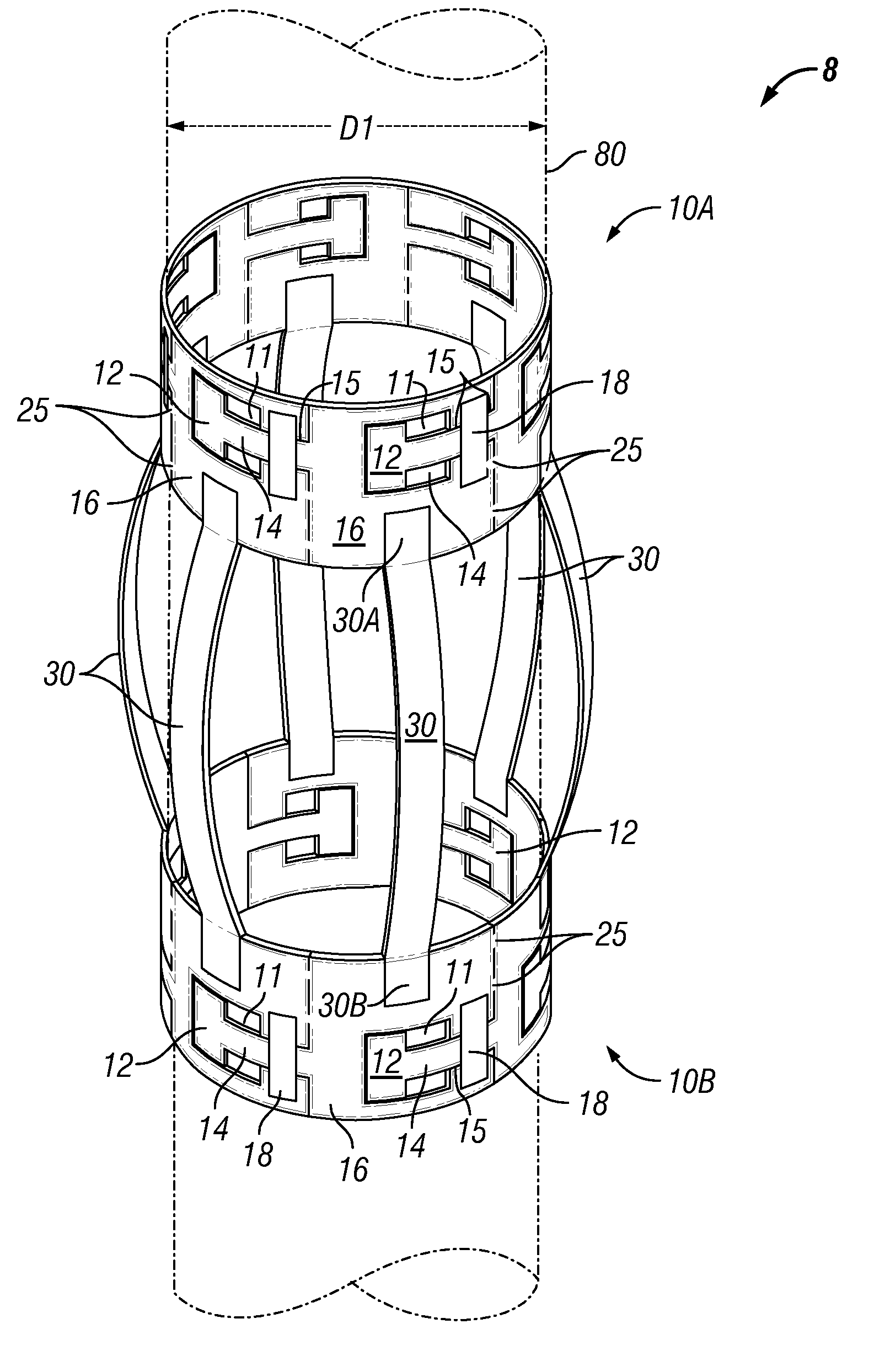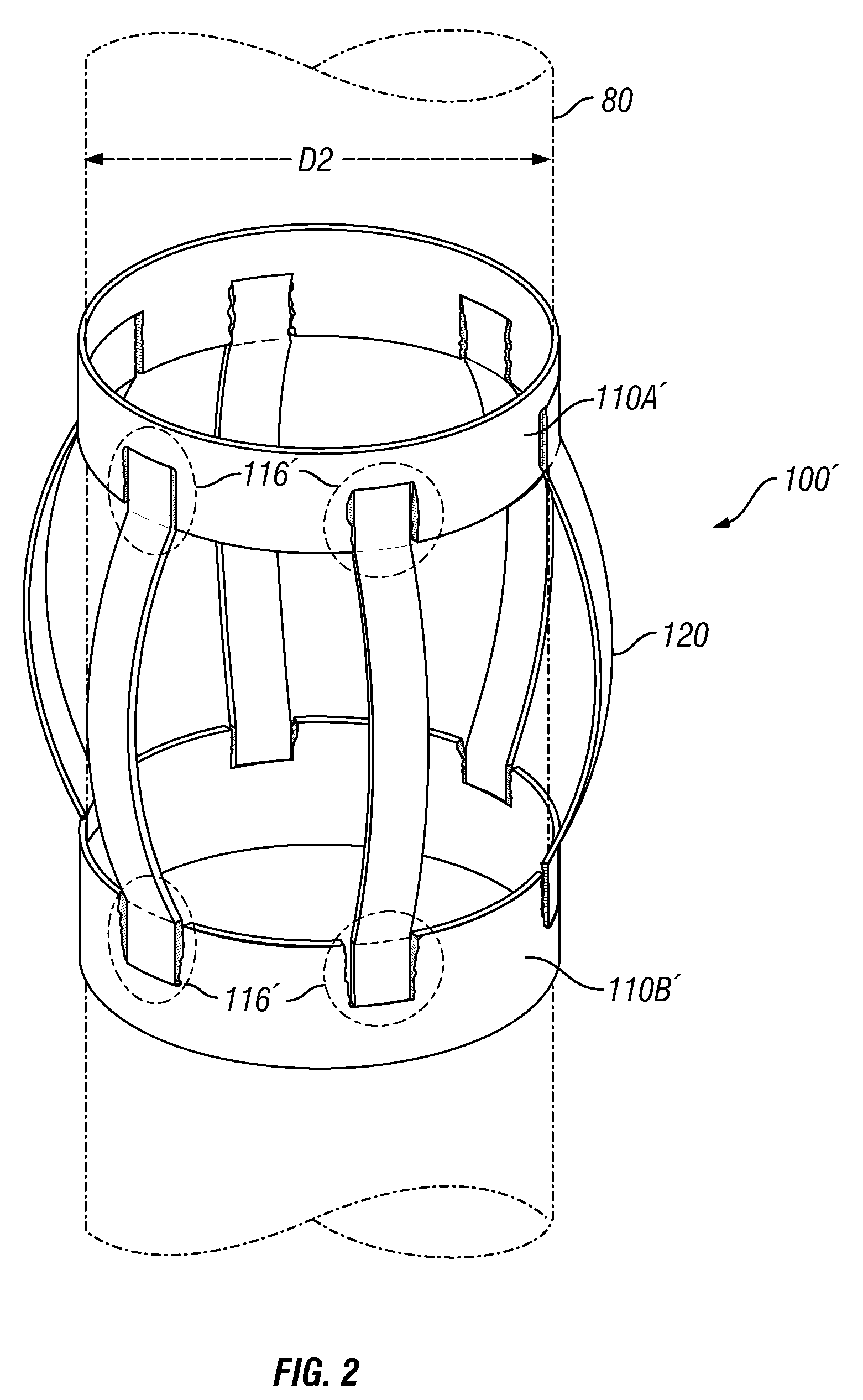Expandable centralizer for expandable pipe string
a technology of expandable pipes and centralizers, which is applied in the direction of drilling pipes, drilling casings, borehole/well accessories, etc., can solve the problems of bow springs slipping out of alignment, affecting the expansion and the expansion of the centralizer is likely to be damaged or impaired. , to achieve the effect of reducing the clearance, reducing the plastic deformation of the collar and the bow spring connection, and reducing the diameter of the expandable collars
- Summary
- Abstract
- Description
- Claims
- Application Information
AI Technical Summary
Benefits of technology
Problems solved by technology
Method used
Image
Examples
Embodiment Construction
[0038]FIG. 3 illustrates one embodiment of an expandable centralizer 8 comprising a pair of opposed, expandable end collars 10A, 10B (hereinafter “expandable collars”) and a plurality of generally angularly distributed bow springs 30. The expandable collars 10A, 10B each have a bore, and the bores of the two expandable collars are generally aligned, one with the other, to receive a generally linear and expandable pipe segment 80 there through.
[0039]The illustrated bow springs 30 each have a first end 30A connected to the first expandable collar 10A, and a second end 30B connected to the second expandable collar 10B. Each bow spring 30 is shown in FIG. 3 in its deployed and outwardly bowed configuration, and each is generally flexible and collapsible to lie generally along a portion of the exterior surface of the pipe segment 80 that may be received through the aligned bores of the expandable collars 10A, 10B. When collapsed, e.g., to lie along the exterior of the pipe segment 80, ea...
PUM
| Property | Measurement | Unit |
|---|---|---|
| thickness | aaaaa | aaaaa |
| thickness | aaaaa | aaaaa |
| diameter | aaaaa | aaaaa |
Abstract
Description
Claims
Application Information
 Login to View More
Login to View More - R&D
- Intellectual Property
- Life Sciences
- Materials
- Tech Scout
- Unparalleled Data Quality
- Higher Quality Content
- 60% Fewer Hallucinations
Browse by: Latest US Patents, China's latest patents, Technical Efficacy Thesaurus, Application Domain, Technology Topic, Popular Technical Reports.
© 2025 PatSnap. All rights reserved.Legal|Privacy policy|Modern Slavery Act Transparency Statement|Sitemap|About US| Contact US: help@patsnap.com



